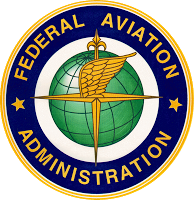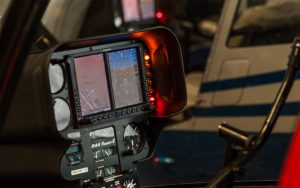
 NextGen technologies are providing better and more frequent data to improve collaborative decision making for the aviation industry and reduce the impact of delays on the traveling public. The enhanced data is helping to arrange aircraft so that delay notifications are whittled away and to allow airlines to use this data and decide the best way to schedule flights.
NextGen technologies are providing better and more frequent data to improve collaborative decision making for the aviation industry and reduce the impact of delays on the traveling public. The enhanced data is helping to arrange aircraft so that delay notifications are whittled away and to allow airlines to use this data and decide the best way to schedule flights.Accurate aircraft position information on the ground is critical to smooth airport operations. Precise arrival and location information makes it easier for air traffic controllers, airlines and other flight operators to manage the complex task of moving hundreds of flights along taxiways and runways, to and from gates. It’s what the aviation
community refers to as surface situational awareness.
Improving this awareness not only increases efficiency at the airport and helps reduce delays, but it also enhances safety.
The FAA is improving surface situational awareness with a NextGen capability that provides access to surface data from 26 airports (with more to be added) through a single distribution point.
The information will live in the cloud, giving everyone in the National Airspace System the opportunity to access the same information immediately. It ensures the security of the data, saves time and reduces costs.
Access to precise position data is helping airlines manage delays. The average taxi-out delay in 2011 for the Core 30 airports was less than five minutes; about 22 percent of the 5,890,918 observed departures were delayed.
According to Delta Airlines officials, knowing exactly where their flights are in the line for departure is helping traffic managers decide when to pull aircraft back to the gate to meet the 3-hour tarmac rule. It also helps them schedule departing aircraft for de-icing and determine whether to hold flights at the gate during severe weather events. A decision to hold flights at the gate rather than waiting on the taxiway has the additional benefit of reducing fuel use and emissions exhaust.
Delta also uses surface position data to do post-operational analysis. By re-running the day’s operations, traffic planners can see where there are bottlenecks and work with the airport to find solutions that make the flow of airplanes on the ground more efficient.
The data come from airport ground surveillance systems, which track airplanes on runways, taxiways and those aircraft flying within five miles of the airport, and are able to determine their precise position and aircraft identification. Controllers use this information as an advisory alerting capability; an additional safety tool that helps them keep aircraft out of each other’s way.
American Airlines uses shared surface position data in similar ways, improving situational awareness for its System Operations Control department at several of the airports at which the airline operates. In addition, American Airlines’ ramp traffic controllers at Dallas-Fort Worth International Airport are able to see the exact location of flights entering the ramp area (the area around the gates), allowing them to make better decisions about traffic movement.
While there are safety benefits for controllers, airlines can use the data to validate the exact moment one of their flights touch down. As a result, flight operations centers are able to more efficiently coordinate the teams of people who meet the flight and get the aircraft ready for its next trip.
“The bird’s-eye view of the airport surface helps our team reduce tarmac delays, ensure more on-time arrivals and departures and more effectively manage operations during inclement weather,” said US Airways in a press release announcing the deployment of a commercial surface management capability at its key hub airports that relies on data received from the FAA’s single source.
Building on the success of surface data sharing and other surface capabilities, the FAA and aviation community stakeholders are developing a national concept of operations for Airport Surface Collaborative Decision Making.
This concept is comprised of five primary capabilities, which build on one another:
- Sharing of real-time and forecasted operational airport information to get the right information to the right people at the right time.
- Tactical management of airport surface movement and aircraft departure queues to avoid excessive taxi-out times, improve departure efficiency and reduce harmful emissions.
- Management of arrival traffic flows to increase throughput and to coordinate arrival and departure demand.
- Analysis, measurement and monitoring capabilities for use in the quantitative measurement of data quality, compliance and performance of all users, and collaborative assessment of operational performance.
- Harmonization and eventual interoperability between air navigation service providers around the world.


